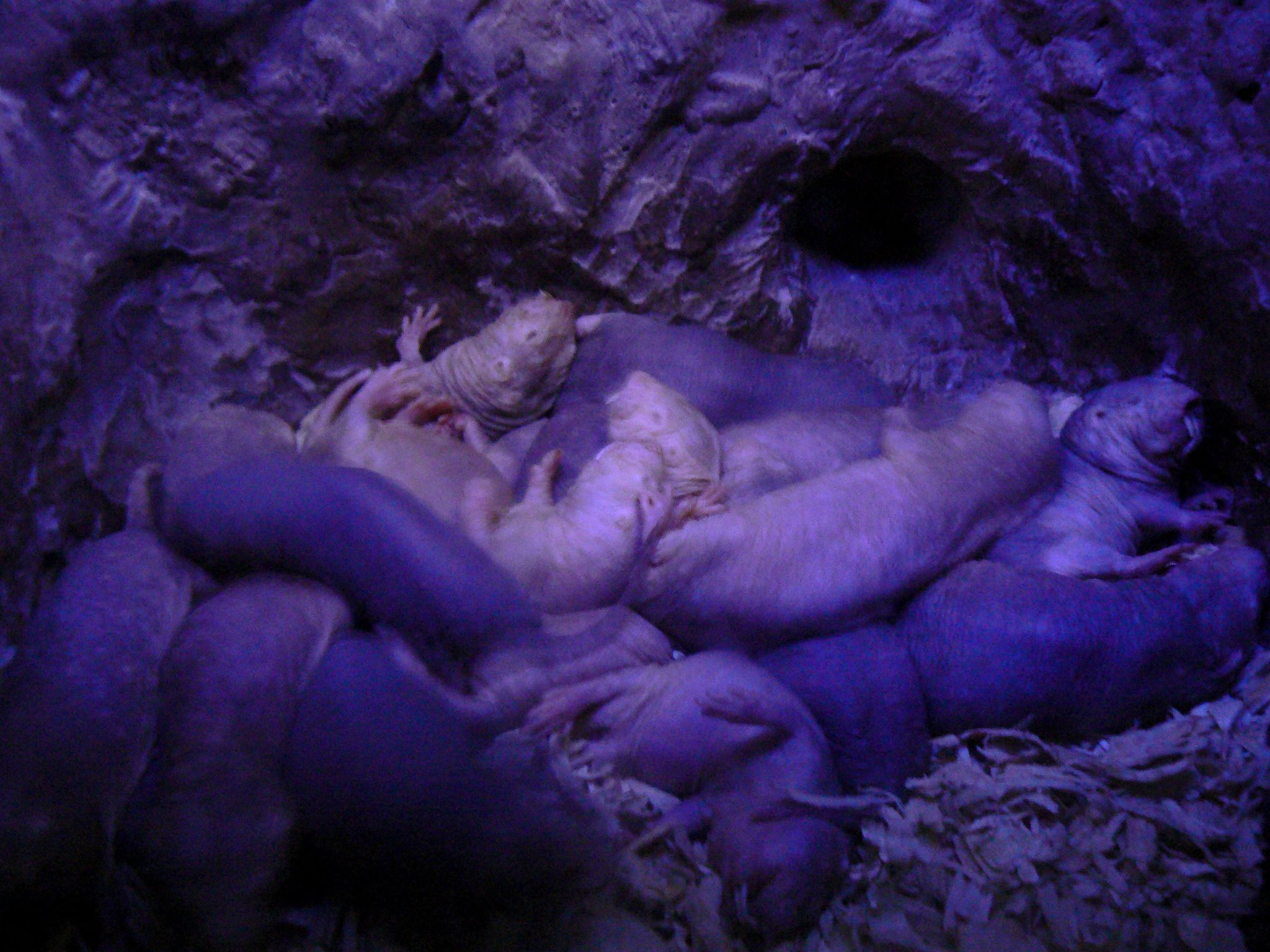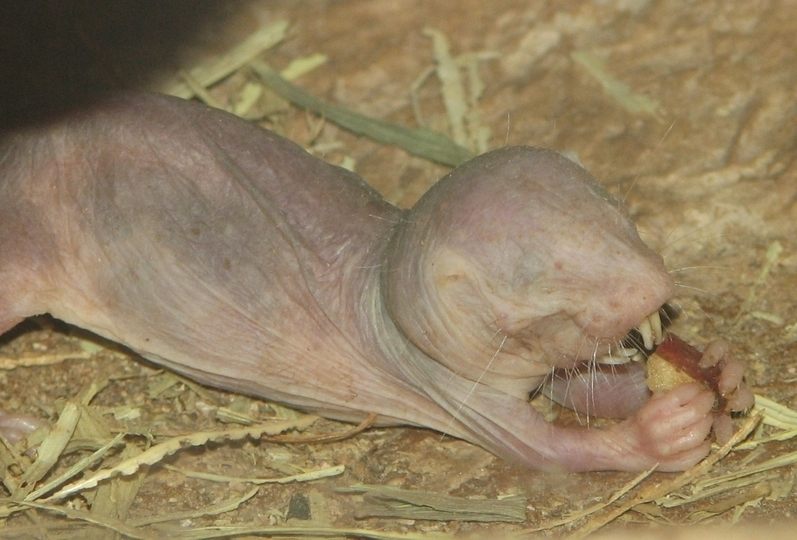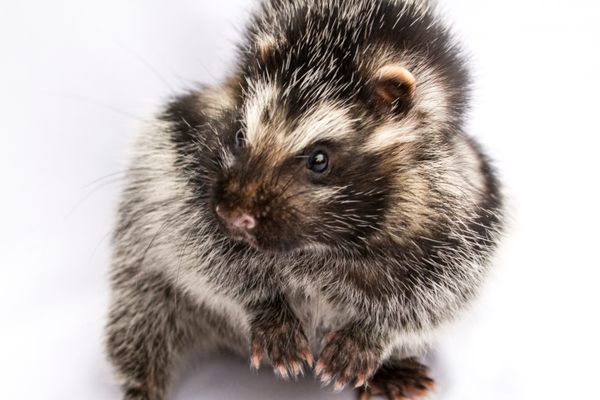Could Naked Mole-Rats Hold the Key to Everlasting Life?

The key to longevity? (Photo: Justin/flickr)
The naked mole-rat—as its name fairly shouts—is not a comely animal. It looks like a wrinkled potato with pinhole eyes, a wet, pink divot for a nose and two dagger-like teeth. But its weirdness runs more than skin deep.
Indigenous to East Africa, naked mole-rats live in colonies beneath the earth, ruled by a queen, like bees or ants. They are remarkably pain-resistant and have very low body temperatures.
They may also hold the key to unlocking everlasting life in humans.
Naked mole rats can live to be 30 years old–the longest life ever clocked in a rodent–and are nearly impervious to cancer. (The oldest recorded naked mole rat, Old Man, perished at the advanced age of 32 at a research colony in San Antonio, Texas.) Such traits mark them as an “extreme animal”–creatures with remarkable features some scientists believe can be studied and mimicked in humans.

Can naked mole-rats help humans achieve immortality? (Photo: Jedimentat44/WikiCommons CC BY 2.0)
João Pedro de Magalhães, a scientist, futurist and senior lecturer at the University of Liverpool, has been fascinated by extreme animals and naked mole rats in particular for many years, and spearheaded an effort to sequence its genome. He and his collaborators succeeded, and the annotated genome is now available to researchers for free download.
“Aging is the biggest cause of illness and suffering in modern society,” says de Magalhães, who believes that—whether we all want it or not—the end-run of biomedical research is a cure for aging.
De Magalhães is not a scientific Quixote—plenty of high-profile funders have sunk money into the quest for radical life extension. (Craig Venter, credited with being one of the first scientists to unravel the human genome, founded Human Longevity Inc., an organization devoted to studying aging-related diseases and, ultimately, extending human life.) We may be centuries away from such a reality, according to de Magalhães. But studying extreme animals like the naked mole-rat could change the game.
If researchers are able to pinpoint the mechanisms that enable longevity in naked-mole rats, it’s possible that drugs could be developed that mimic the same behavior in humans, or even insert them directly into a patient’s cells via gene therapy. This isn’t unheard of—scientists successfully extended the life of worms with the genes of zebrafish, which have unusually long lifespans (for fish).

A cozy nest of naked mole rats. (Photo: Benny Mazur/WikiCommons CC BY 2.0)
De Magalhães, who favors studying mammals, is currently trying to get funding to put naked mole-rat genes in mice and see if that protects them from cancer or causes them to live longer.
De Magalhães and his team have also sequenced the genome of the Bowhead whale, which can live to be 200 years old. And there are plenty of other long-lived animals out there: Some bats, Galapagos tortoises, and capuchin monkeys all live long lives. The Ocean Quahog clam can live 500 years. There’s even a tiny, immortal jellyfish that could theoretically live forever if not devoured by a predator or otherwise dispatched.
In recent years, the cost of sequencing genomes has declined dramatically, although hurdles remain. Obtaining DNA, for example, can be tricky. De Magalhães once landed a Bowhead whale sample by sheer luck. He happened to read a paper by scientists in Denmark who had obtained whale DNA following a legal subsistence hunt in Greenland, and they agreed to share with him.

Good fodder for a joke? (Photo: Public Domain/WikiCommons)
Finding suitable DNA to work with is not the only challenge he faces: when not occupied with the mysteries of aging, de Magalhães pursues his hobby of stand-up comedy. He hasn’t found a way to meld hobby and work yet–aging is too difficult to joke about, he says–but he believes naked mole-rats might have some potential for this, too.
“Whenever you show a slide, you can always make a joke about how they look,” de Magalhães says. “Because they have a queen, in Britain you can make a joke about that as well. So, yeah, naked mole-rats are good comedy material I would say.”

This story appeared as part of Atlas Obscura’s Time Week, a week devoted to the perplexing particulars of keeping time throughout history. See more Time Week stories here.















Follow us on Twitter to get the latest on the world's hidden wonders.
Like us on Facebook to get the latest on the world's hidden wonders.
Follow us on Twitter Like us on Facebook